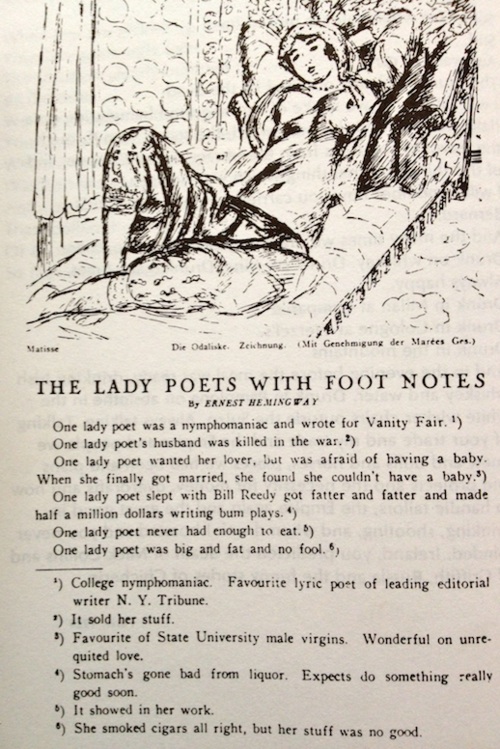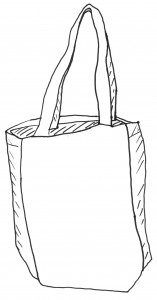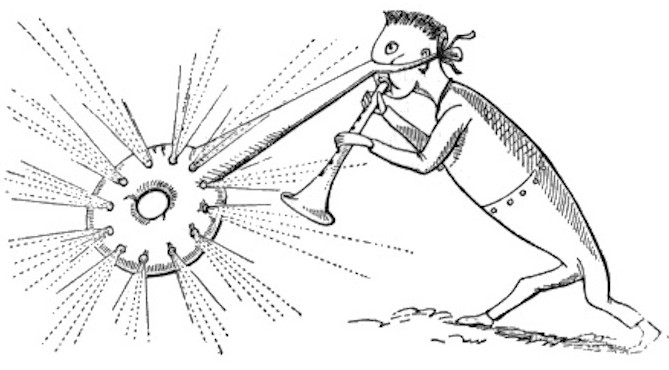While rumbling over Mount Sharp on "musical eroticism" eubanks winkler#tbm=bksMars, NASA's Curiosity rover found a strange crackled terrain.
These distinct patterns in dry mud, found over 100 million miles away in space, are a thrilling discovery for geologists. The cracks form a lattice of hexagons, signaling that the land has gone through intermittent spells of wetness and dryness. Many scientists credit these environmental shifts with prompting the chemical reactions needed to create microorganisms on Earth.
Of course, scientists have already found ample evidence that Mars could have supported life long ago. But these new geological findings are something quite different, experts say. They reveal the environmental conditions that could have allowed life to emerge on the Red Planet in the first place.
And to think this major breakthrough was all made possible by looking between the cracks — literally.
"This is the first tangible evidence we’ve seen that the ancient climate of Mars had such regular, Earth-like wet-dry cycles," said William Rapin of France’s Institut de Recherche en Astrophysique et Planétologie in a statement. "But even more important is that wet-dry cycles are helpful — maybe even required — for the molecular evolution that could lead to life."
This Tweet is currently unavailable. It might be loading or has been removed.
A team of researchers including lead author Rapin has published a paper in Naturedescribing how this peculiar mesh of cracks offers the first evidence of wet-dry cycles occurring on ancient Mars.
"Wet-dry cycles are helpful — maybe even required — for the molecular evolution that could lead to life."
Curiosity found the mud cracks while exploring a transitional zone of rock between a layer that was rich in clay and another chock full of salty substances called sulfates. Clay minerals tend to form in water, and sulfates form as it evaporates. This intermediate zone preserves a moment in time when lakes and rivers in the Gale Crater, where Mount Sharp stands, began to recede, according to the research.
 Scientists say the cracks form a lattice of hexagons, showing that the land has gone through intermittent spells of wetness and dryness. Credit: NASA / JPL-Caltech / MSSS /IRAP
Scientists say the cracks form a lattice of hexagons, showing that the land has gone through intermittent spells of wetness and dryness. Credit: NASA / JPL-Caltech / MSSS /IRAP As the mud dries, it shrinks and breaks apart into T shapes. When moisture returns, those patterns soften again, deforming the Ts into Ys that connect to create hexagons. New sediment deposited into the area kept forming new hexagons, geologists say. Curiosity found a salty crust along the edges of the cracks that prevented them from eroding, which explains how these patterns could survive for billions of years.
Want more scienceand tech news delivered straight to your inbox? Sign up for Mashable's Light Speed newslettertoday.
 As mud dries, it shrinks and breaks apart into T shapes. When moisture returns, those patterns soften again, deforming the Ts into Ys that connect to create hexagons. Credit: NASA / JPL-Caltech / MSSS
As mud dries, it shrinks and breaks apart into T shapes. When moisture returns, those patterns soften again, deforming the Ts into Ys that connect to create hexagons. Credit: NASA / JPL-Caltech / MSSS Scientists don't know for sure how life started on Earth, but one strong theory suggests the shifting back and forth between wet and dry conditions helped bring together the ingredients for microbes: simple, primitive living things. Among those first molecules of biology are carbon-based polymers, including nucleic acids.
Earth's tectonic plates, which Mars lacks, churn the surface of the planet, so examples of its early history are erased. Scientists are eager to study the Martian mud cracks to get better insight not just into the Red Planet but perhaps even the recipe for life on Earth, too.
"It’s pretty lucky of us to have a planet like Mars nearby that still holds a memory of the natural processes which may have led to life," Rapin said.
 This fat bear's before and after photos are stunning
This fat bear's before and after photos are stunning
 Dear Pete Campbell, A Word of Advice by Adam Wilson
Dear Pete Campbell, A Word of Advice by Adam Wilson
 Scary Kids' Books, Annoying Writers by Sadie Stein
Scary Kids' Books, Annoying Writers by Sadie Stein
 Hemingway on “The Lady Poets” by Sadie Stein
Hemingway on “The Lady Poets” by Sadie Stein
 NYT mini crossword answers for May 9, 2025
NYT mini crossword answers for May 9, 2025
 Our New Tote, Designed By ... You! by The Paris Review
Our New Tote, Designed By ... You! by The Paris Review
 A Little Vacation from Writing by Sadie Stein
A Little Vacation from Writing by Sadie Stein
 If You Missed the Translation Panel… by Sadie Stein
If You Missed the Translation Panel… by Sadie Stein
 America's Newest Sweetheart by Andrew Palmer
America's Newest Sweetheart by Andrew Palmer
 Ray Bradbury, 1920–2012 by The Paris Review
Ray Bradbury, 1920–2012 by The Paris Review
 R.I.P. Maurice Sendak by Sadie Stein
R.I.P. Maurice Sendak by Sadie Stein
 Edward Lear’s “The Dong with a Luminous Nose” by Sam Munson
Edward Lear’s “The Dong with a Luminous Nose” by Sam Munson
 MapQuest is letting you name the Gulf of Mexico whatever you want
MapQuest is letting you name the Gulf of Mexico whatever you want
 Owala FreeSip is without a doubt the best water bottle
Owala FreeSip is without a doubt the best water bottle
 A Panorama of The House of the Seven Gables by Jason Novak
A Panorama of The House of the Seven Gables by Jason Novak
 Don't Miss the 1966 Tee by The Paris Review
Don't Miss the 1966 Tee by The Paris Review
 Best Garmin deal: Save $50 on the Venu 3S at Best Buy
Best Garmin deal: Save $50 on the Venu 3S at Best Buy
 Hiding in Plain Sight by Alex Carp
Hiding in Plain Sight by Alex Carp
Climate activists shut down 5 tar sands oil pipelinesTV anchor delivers the perfect side eye while listening to a Trump supporterMadison Bumgarner finally proven mortalWatch Red Sox legend Big Papi bid an emotional farewell to Fenway ParkMix it up this Halloween with a pineapple jackRock out to this fluffy floating cloud bluetooth speaker'League of Legends' World Championship prize pool hits $4 million and counting'80s gadgets the XNorth Carolina flooding proves we need a new way of rating hurricanesNew Gear VR headsets no longer work with Samsung's Galaxy Note7Samsung issues intense fireproof box for Galaxy Note7 returns'80s gadgets the XConservative provocateur Milo Yiannopoulos is looking to buy 4chanR.E.M., Death Cab for Cutie team up against Trump in '30 Days, 30 Songs'Please help me stop compulsively checking the FiveThirtyEight election forecastStunning artwork of ceramic poppies remembers fallen WW1 soldiersReport: Only 1 in 6 teen girls feel valued for their mind and abilitiesPrank calls and press madness: Ken Bone on life as an internet celebrityHow to jump from the Galaxy Note7 to the Google PixelTV anchor delivers the perfect side eye while listening to a Trump supporter Pretend you have the worst job with Facebook's content moderation quiz Twitter's political ad ban just hit, and it's already pissing off conservatives Hulu's ‘Dollface’ depicts female friendship at its most basic: Review This giraffe birth livestream is driving the internet insane Google Maps adds button to translate addresses and directions Google will now tell you how you've been mispronouncing words your entire life 'Joker' is the first R Elon Musk says new Tesla Gigafactory will be built in Berlin Air fryers at The Home Depot are 50% off 17 perfect gifts for a zero waste holiday Jerk alligator steals a huge fish off a little boy's line Steve Harvey just woke up and he wants to know what happened during the Oscars Barack Obama and Malia had an awesome night out in NYC and looked awesome doing it Lily Allen quits Twitter after trolls attack her over son's death Ava DuVernay's Oscars dress has more meaning behind it than you think A private equity firm now runs .org, the domain for nonprofits Why you should watch 'Sister Act 2' on Disney+ Photos of Ford's electric Mustang Mach Colbert skewers Trump with a parody of that New York Times ad The dreaded 'someone is typing' dots have entered the impeachment drama
3.3863s , 10194.6875 kb
Copyright © 2025 Powered by 【"musical eroticism" eubanks winkler#tbm=bks】,Creation Information Network